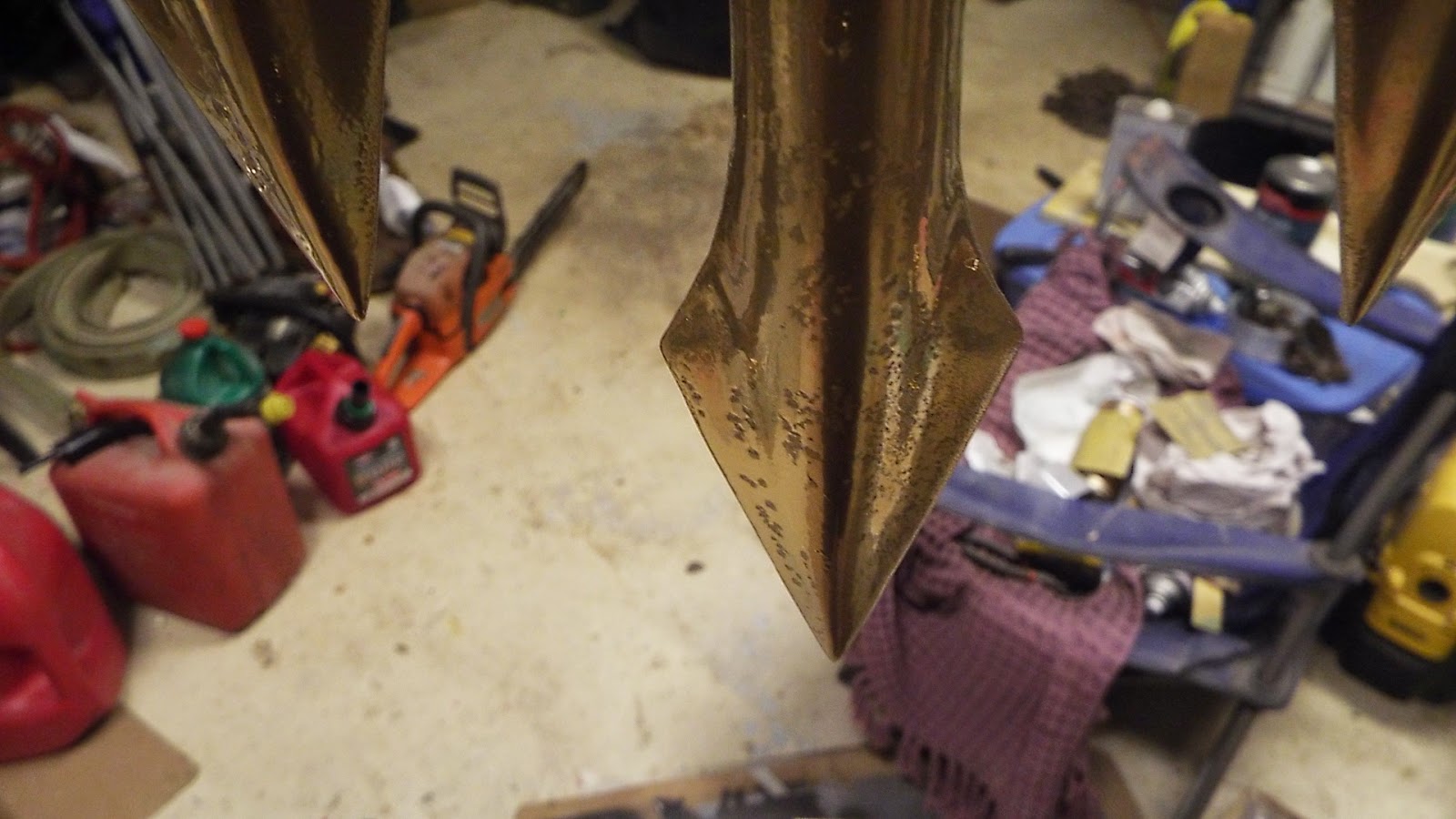I've always wanted to make a trident since before I started making props. I made one before when I didn't have that much experience and it didn't turn out as well as I would have liked. I got a commission request for one and I gladly accepted it to redeem myself.
STEP ONE: DRAWING AND CUTTING
I free-handed the trident head onto some poplar wood. I'm using red oak for the poles for it's strength even though it comes with the added problem of the grain showing through, but we can fix that.
I cut it out using a jigsaw. I cut out a second one under the first to keep the parts from breaking off from the force of the saw.
Here's a rough idea of how the trident will look:
STEP TWO: SHAPING
Side shafts are shaped
More rounding
I applied bondo onto the pole where I shaped and turned it on my lathe to get it perfectly round. I also drilled holes into the ends of the poles for the screws and bolts since the buyer wanted it to come apart for easy travel.
I decided to try out some bondo spot putty someone recommended, and it worked great for smoothing the surface.
You can see the wood grain showing through the filler and sandable primer.
STEP THREE: SANDING
I applied spot putty on the poles to fill in the grain., and primed the head piece.
I sanded the putty and primed the poles again and there's no more grain showing. This stuff is great!
I JB. Welded the screws and bolts in, but... the head cured crooked because the bottom of the ring wasn't flat.
So I sanded some more, primed again, and sanded and polished it up to 0000 steel wool.
Now it's straight!
STEP 4 : MOLDING AND CASTING
Materials: 2 gallons of Moldstar 15, sealant mixing containers and some sulfur-free clay. It should be noted that moldstar is a platinum rubber and won't cure with clay that has sulfur in it.
I built up some foam under the head to compensate for the ring on the bottom being so wide.
Then I built clay around it and a foam board wall. I know it looks wonky with all the colors, but it was available and sulfur-free.

Next I poured the second half, and the trident head mold is complete!
The next mold will be the trident pole. I needed a lot more clay to make this mold, so I ordered some called Sculptex that's sulfur-free for moldmaking. It took a little more than 9, 1 pound slabs to encompass the pole. Add some registry keys and feed tubes and we're ready to pour.
First half is done! I didn't even have to use sealant on the clay (I actually forgot to), it just turned out great and peeled off as if there was sealant on it. I really recommend Sculptex. It's only $3.30 a pound.
I don't have pictures of the next sections, but I finished the mold by putting up wooden walls this time with foam board lined on the inside to flex a little and be snug with the rubber.
The first 2 casts had large bubbles running along the center, so I had to add more vents/feed tubes.
The third cast was bent on the bottom end with the large pommel because something pushed the very end of the mold.
Here's the fourth cast of the pole lookin very nice. It only needs some sanding. The second cast of the trident head turned out pretty good, too.
As you can see, there are still some bubbles, but I'll be filling them in with Bondo Glass epoxy before I started sanding, making sure to rough the inside of the bubble so it adheres better.
STEP 5: PAINT
I'll be editing this section as soon as I finish the plastic version, but the buyer wanted the wooden master since I wouldn't be able to finish the cast in time for their con.
As you saw before, the piece was primed:
There was still clay and sealant on the piece so I wiped it down with alcohol, reprimed it, and sanded it smooth again. Next, I sprayed Montana's Gold Chrome on the pieces and I have to say the paint itself looks amazing! A near mirror finish!
However, for some reason, fish eyes kept showing up in the paint after multiple coats and after wiping down with alcohol again and letting it dry.
I put on a final coat, and it seemed to cover a little more.
The buyer wanted it the next day, so I just had to leave it alone like that or else it would be tacky. They wanted it as it for their cosplay at a con.
Here's the finished product (for right now).


















































































